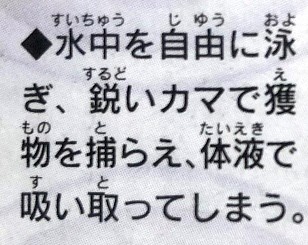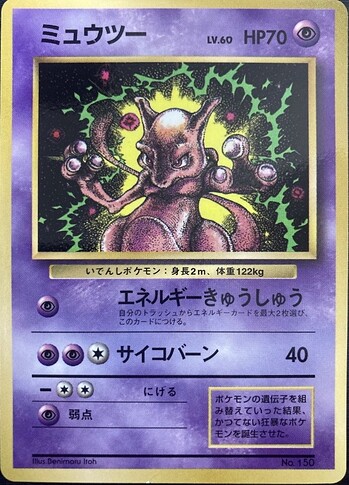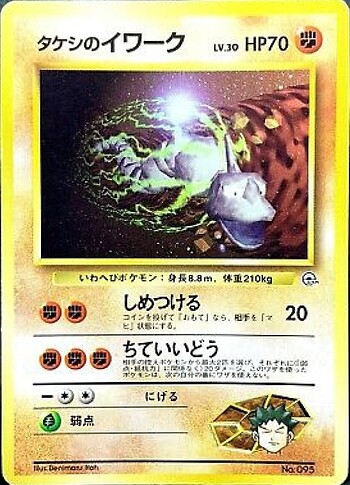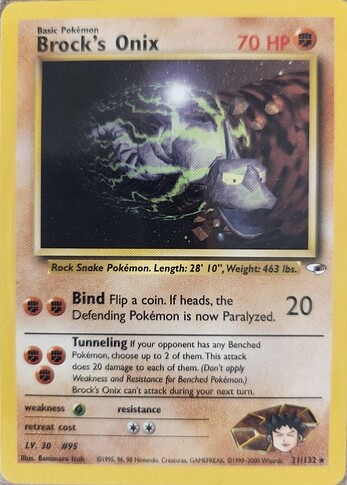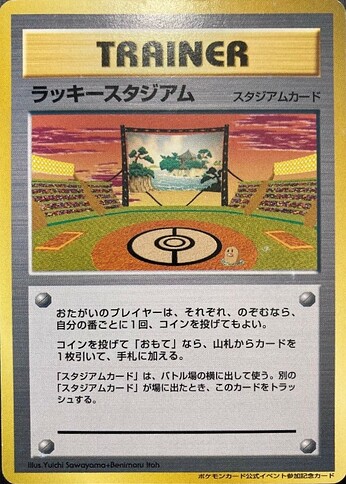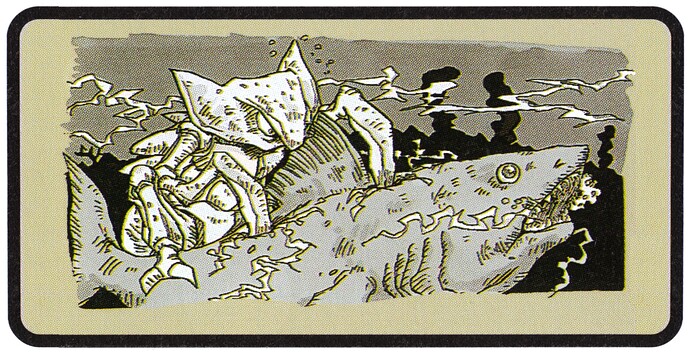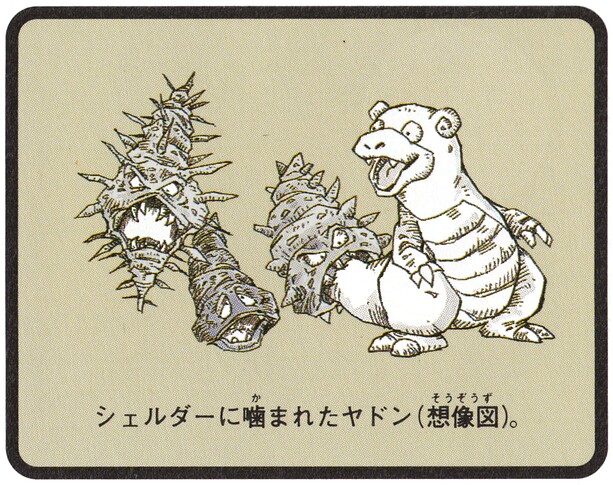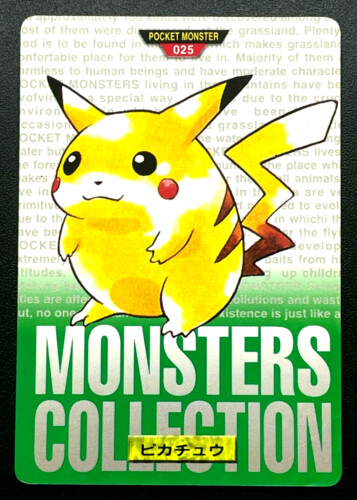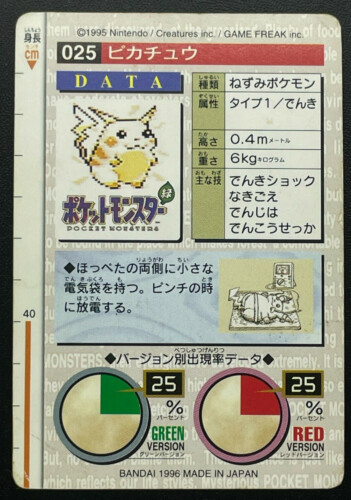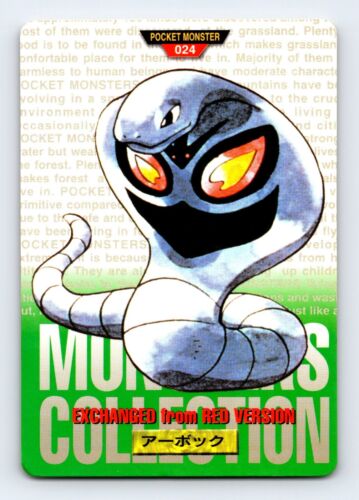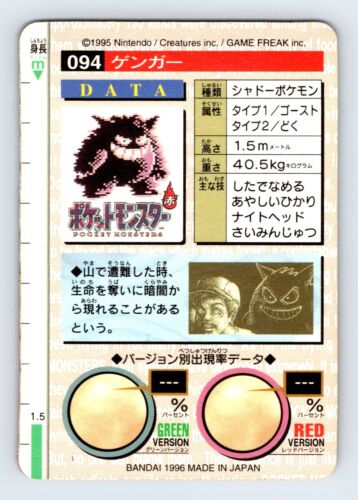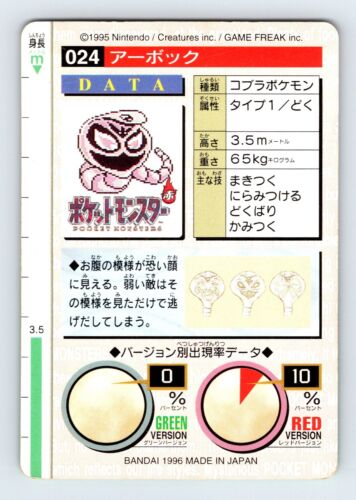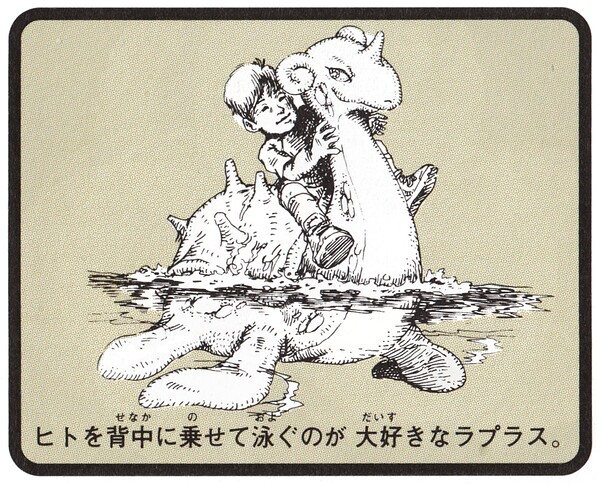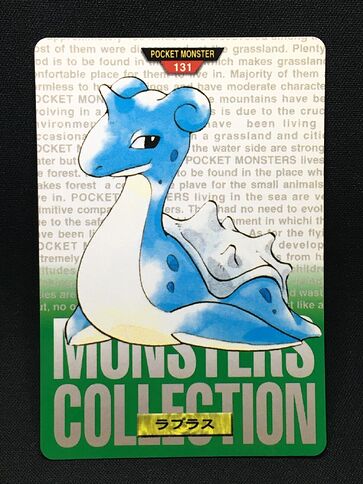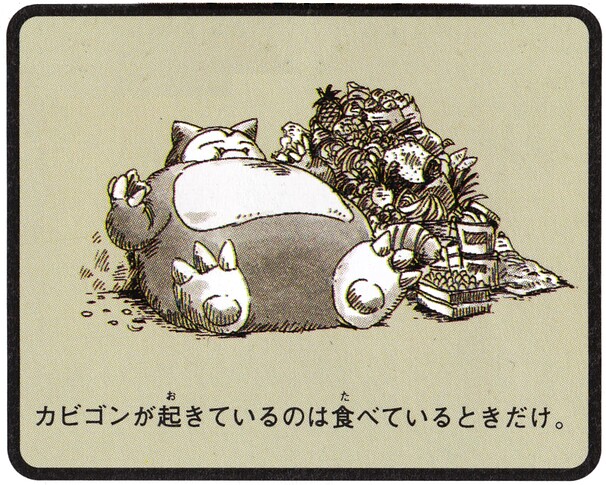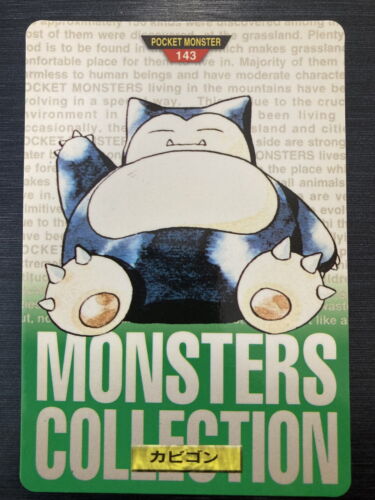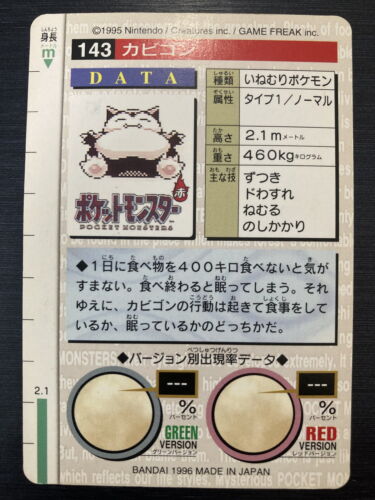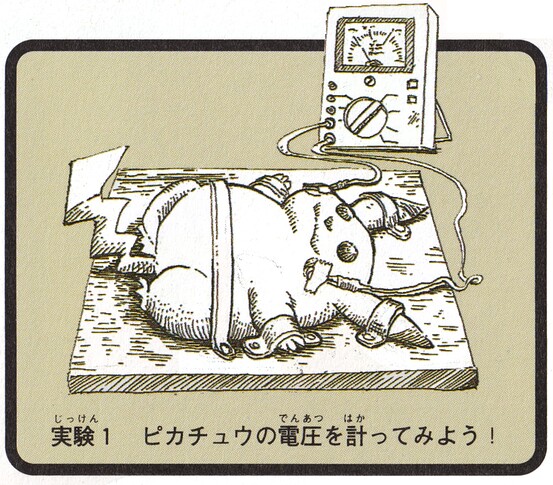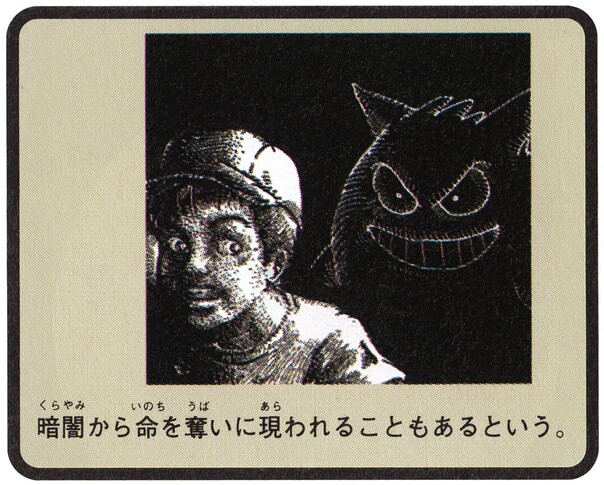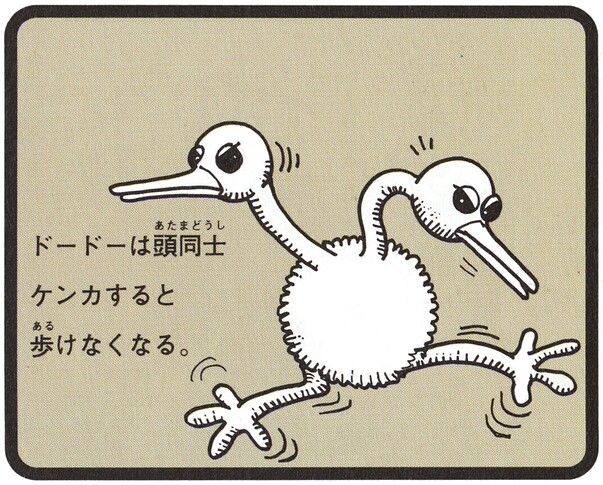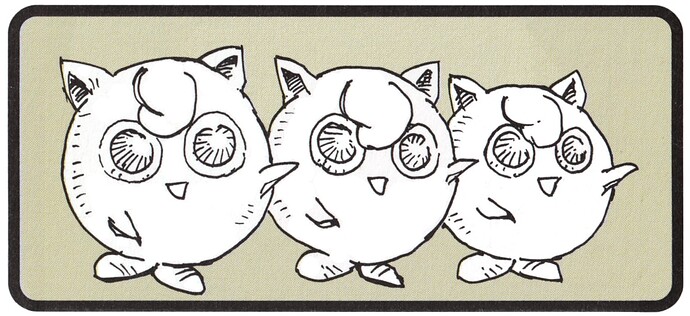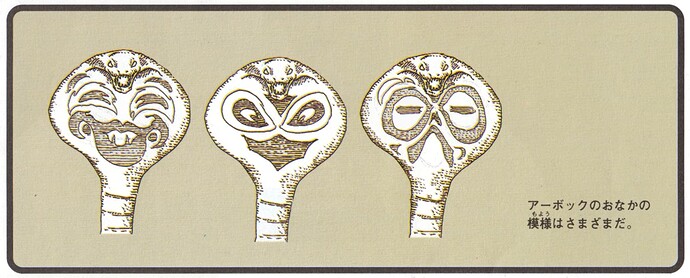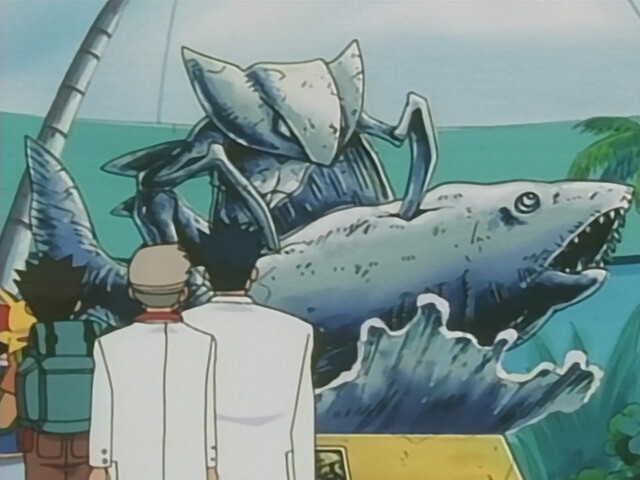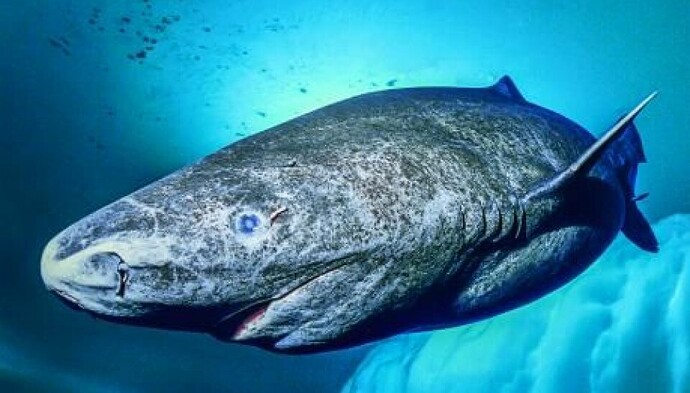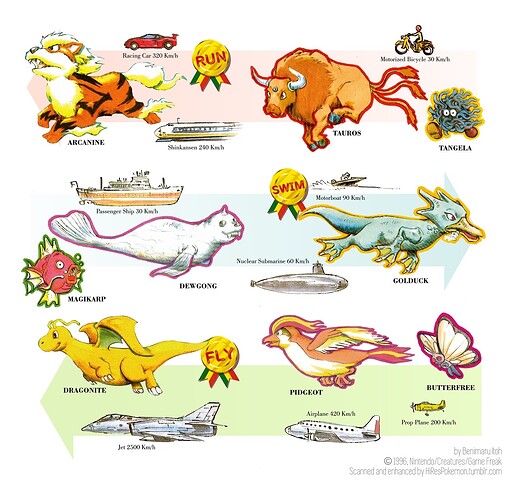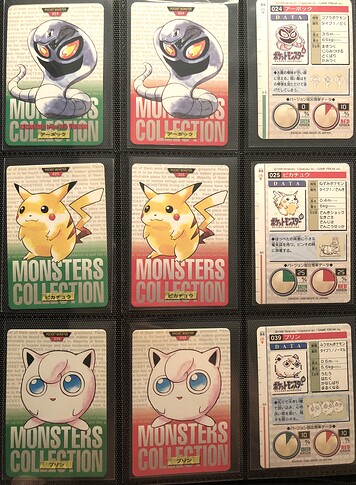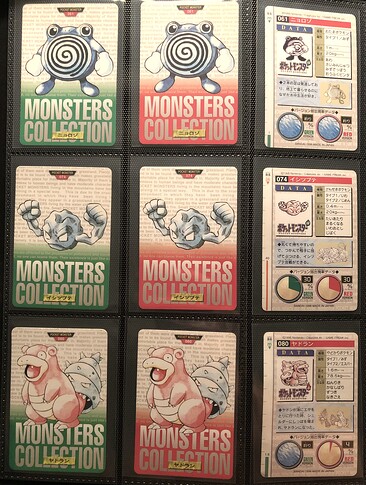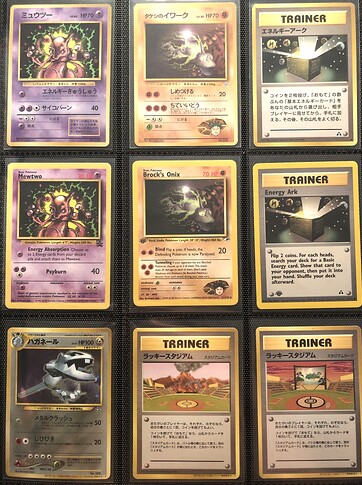For those of you who don’t, know I am obsessed with Kabutops. Swords for hands is one of the coolest attributes (shout out to Scyther), and such an original design that looks like a Horseshoe Crab mixed with an extraterrestrial demon. It’s been one of my favorite Pokémon since I was 10 years old. I have a distinct memory of sketching one at home because I didn’t have the card.
I was perusing eBay recently, as one does, and I ordered a Japanese Jungle Cubone, Marowak, and Dark Jolteon for an Arita collection I’m putting together. When possible, I try and order multiple items from the same seller to save on shipping costs, and to prevent receiving a million packages. Packages are a big problem especially when you can’t stop buying Pokémon cards. At checkout on a whim, I threw in my first Carddass card – Kabutops “Green Version”. Up until this point, the only thing I knew about Carddass was Ken Sugimori did the artwork. That’s it.
On mail day, I got my Carddass Kabutops Green Version in hand. Ken Sugimori’s art is clean, and aesthetically pleasing to me. When I flipped over to the backside, I was surprised to find artwork I had never seen before. It was a miniature art across the middle of the card depicting Kabutops in black and white, stabbing, and attempting to eat a dying shark, while presumably being underwater. Excitement rushed over me like I was a kid who just got permission to go play at a friend’s house. I immediately searched the back of other Carddass listings online to see what their art looked like, but I found nothing. All the other cards had Japanese text in a blue box, but no miniature art.
So many thoughts raced through my mind.
- I love Kabutops. This art is amazing. I must know more.
- First instance of a Pokémon hunting, stabbing and eating a “regular animal”? Underwater?
- Why was Kabutops the only card with this “extra” mini art on the back?
- What kind of fish or shark could this be? Does it exist in real life? (I will address this in a separate post on this thread)
- Who drew this?
First step was to translate the Japanese description next to the image on Google translate. After several unsuccessful attempts, I finally got a rough translation. It was rough. The picture communicated more than the translation.
Next step was to find the artist. In short order, I discovered a name I was unfamiliar with - Benimaru Itoh. Benimaru is a 72 year old Japanese man famous for his artwork in the anime world, guitar skills, and leopard print clothing. In addition to his Pokémon drawings, he was part of the development team for Pokémon Stadium, and Pokémon Snap. Later he went on to help develop Star Fox, Metroid, Kirby, and other ventures. What I did recognize about him was the iconic Mewtwo Black Star Promo #14 from 2000. Ironically, I never liked the Mewtwo illustration, which is why I had never bothered to check the bottom left corner to learn his name. Mewtwo seemed too dark and creepy for my taste. It looks like it had taken a bad batch of mushrooms and was attempting to violently suck the air out of the room. Perhaps the color scheme threw me off. Mewtwo was one of nine cards Benimaru illustrated for the TCG including Brock’s Onix, Energy Ark, Lucky Stadium, and others. My feelings for these cards were even lower than Mewtwo. What I did like, was Kabutops hunting and killing this fish underwater.
List of TCG cards illustrated Benimaru Itoh:
- Mewtwo #150 CoroCoro Comics 1997 (Japanese)
- Brock’s Onix #95 LV 30 Nivi City Gym Deck 1998 (Japanese)
- Mewtwo #14 Black Star Promo 2000 (English)
- Brock’s Onix #21 Gym Heros 2000 (English)
- Energy Ark Neo 2 2000 (Japanese)
- Steelix #308 JP Promo Trainer Magazine 2000 (Japanese)
- Lucky Stadium JP Promo Kyushu/Onix 2000 (Japanese)
- Lucky Stadium JP Promo Tohoku/Diglett 2000 (Japanese)
- Energy Ark #75 Neo Discovery 2001 (English)
In addition to the Kabutops art, I was delighted to find Benimaru drew a number of original images in 1996. From my PhD level research, I’ve found a grand total of 13 Pokémon, in what is loosely regarded as the “The Lost Pokedex”. Of the 13 illustrations, 11 made it to the backside of the Carddass cards. Additionally, the miniature artworks for the 11 Pokémon only appear on Part 1 “Green Version, and Part 2 “Red Version” of the Carddass cards from 1996. No Benimaru Itoh illustrations show up on Part 3 or Part 4 Carddass from 1997, nor did they make it to the mainstream TCG. These drawings were done in a black and white style sketch and accompanied by a description of the Pokémon in Japanese. The drawings are dark and sinister just like Mewtwo from 2000, with the Japanese descriptions even more haunting than the artwork. Below are two MUST SEE links from 2021 detailing the history.
-
Lavacutcontent - A site authored by Dr. Lava describes the history, context, and drawings. Dr. Lava has done considerable legwork translating the Japanese text with Nob Ogasawara (official translator of the first 26 Pokémon games). Additionally, HiResPokemon was able to scan high resolution images of the original artworks, for which, Dr. Lava edited and enhanced in photoshop. Kudos to Dr. Lava, HiResPokemon, and Nob Ogaswara for their work.
-
Sabukaru - A site authored by Casey Omori and Allesando Nobile, which also depicts the original Benimaru images alongside Ken Sugimori’s original watercolors. He also includes detailed translations of the Japanese descriptions.
Pokémon with Benimaru Itoh’s “Mini” Artwork - Located on back/middle of Green/Red Carddass 1996
- Arbok - 024
- Pikachu - 025
- Jigglypuff – 039
- Polywhirl - 061
- Geodude – 074
- Slowbro – 080
- Doduo – 084
- Gengar - 094
- Drowzee – 096
- Horsea – 116
- Kabutops - 141
Pokémon with Benimaru Itoh’s Original Artwork - These DO NOT appear on any Carddass cards
- Lapras - 131
- Snorlax - 143
*Note above how Lapras and Snorlax have no “mini” artwork in the blue box in the middle.
What strikes me most about these artworks is their simplicity, and darkness. Pikachu is depicted strapped down to the table with restraints, medieval torture style. The description says it’s only to measure his voltage, so hopefully Professor Oak doesn’t have any ill intensions. Polywhirl is shown half x-rayed with his bones showing in a zombie looking state. According to Sabukaru’s website, Kabutops’ description translates “Freely swims the sea and uses their sharp sickle-arms to capture enemies and suck their fluids out.” Slightly better translation than mine. And pretty legit moves for a 2 million year old fossil. Gengar’s reads “They will sometimes appear from the darkness to take your life.” Kid friendly, love it. Arbok: “Pidgey & Spearo eggs are their favorite, and sometimes Rattata become their meals too.” More hunting? Why not? Sabukaru’s website says Drowzee is “not that popular with girls”. Even though Hypno was not illustrated by Benimaru, his description says “many children go missing in cities that Hypno appear in.” That’s comforting.
Benimaru’s artwork seems to have alluded me for years. Perhaps I had never heard about Carddass as a kid. Perhaps Japanese exclusive pre-TCG was outside my wheelhouse. Perhaps I was too “busy” as an adult to research them. Semantics. My point is, Benimaru’s original artwork transports me back to 1996 before Pokémon became the biggest media franchise of all time. To a place where an adult artist imagined a wild beast. Benimaru’s art reminds the us, these are monsters.
Closing Thoughts
I realize this may not be new information for veterans. However, I wanted to document my story of discovering this organically, and share it with those who live under a rock. It’s truly rewarding to find this kind of gem, especially when it’s for one of your favorite Pokémon. I implore those who have not seen all 11 Carddass mini arts, to go find them. It changed the way I view my shiny cardboard, and for that I am grateful. Ironically, this journey has led me to more questions than I have answers for, so I must hire the efour community as slave labor to continue my research. Feel free to answer all or none of the below.
Questions @ efour
- What instances can you think of where Pokémon interact with “regular animals”? Bulbapedia has beaten me to the punch list, but I’m hoping there’s more?
- Are there other illustrations of Pokémon hunting and killing prey in the wild?
- Any speculation on what kind of shark or fish is being hunted in the picture? (I will post my own thoughts on this shortly)
- How long can Kabutops hold his breath underwater? How does that stack up to other air-breathing Pokémon?
- Is there a “handbook” from 1996 with all 13 original drawings?
- Who authored the Japanese descriptions? Was it Benimaru or another individual?
- Why did Benimaru only draw 13 Pokémon? Were there others?
- Why did Pokémon only choose to put 11 drawings on the Green/Red Carddass cards? Why not commission Benimaru for all of them?
- Why put Benimaru’s drawings on “Ken Sugimori’s” Carddass cards?
- Is this the first instance of two different artists work on one card? What other examples are there of two artists work on one card?
- Does anyone collect Benimaru’s Carddass or TCG cards?
Please notify me of any missing or inaccurate information.
Thanks for reading.
Rattlesnake


